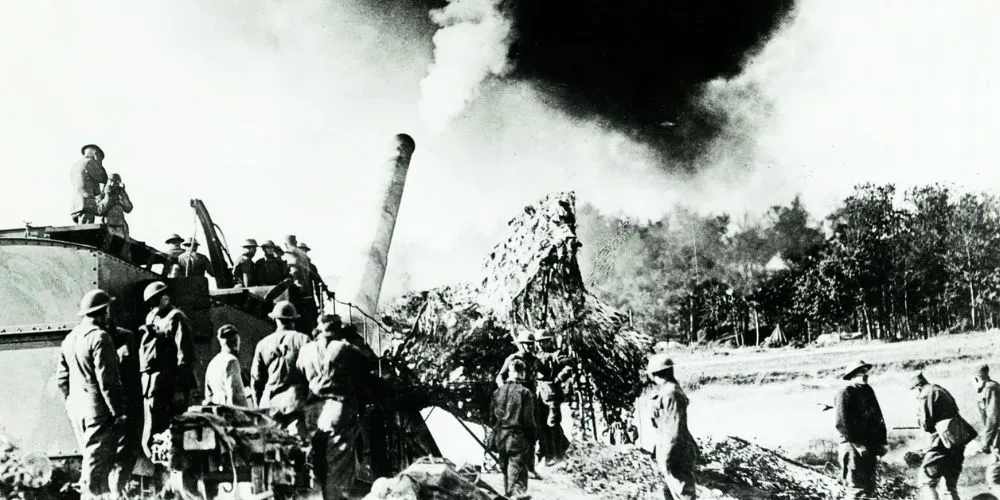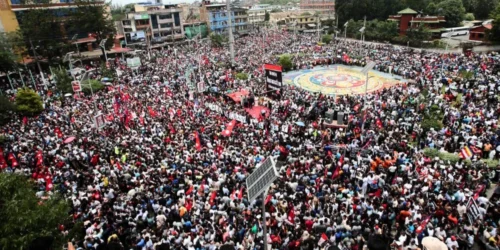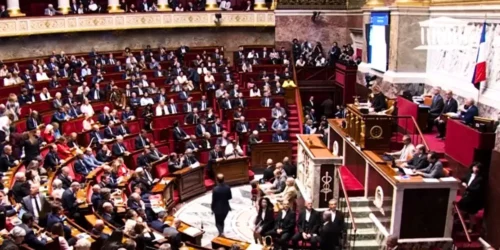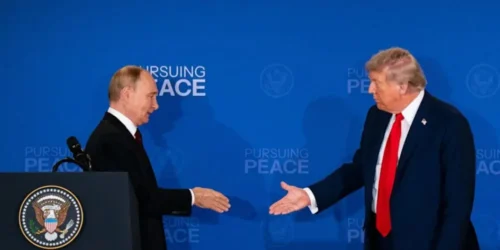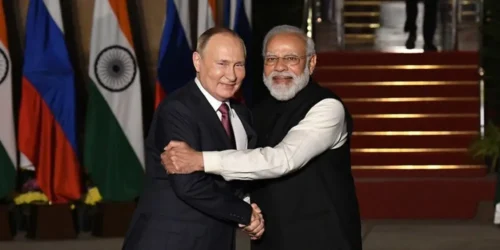It was the war that was supposed to be over by Christmas. In the radiant, sun-drenched summer of 1914, the young men of Europe marched off to the railway stations, flowers tucked into their rifle barrels, cheered on by jubilant crowds. They were marching out of an old world, a world of gilded empires, of plumed helmets, of romantic, storybook notions of battlefield glory. They believed they were embarking on a great and noble adventure.
The First World War was not just another conflict in the long, bloody history of Europe. It was a cataclysm. It was a four-year, continent-spanning industrial meat grinder that consumed a generation and shattered the old world forever. It was a war where the tactics of the 19th century collided head-on with the terrifying technologies of the 20th, creating a form of slaughter so vast and so impersonal that it defied all human understanding. The war itself became the enemy—a voracious, insatiable engine fueled by flesh and steel.
This is a case study of that engine. We will not simply recount the timeline of a war. We will dissect a system of catastrophic failure—a failure of diplomacy, a failure of imagination, and a profound failure of humanity. We will explore how a single assassination in a Balkan backwater could ignite a global firestorm, how the most brilliant minds of a generation could lead their nations into a four-year stalemate of unimaginable horror, and how the “peace” that ended the war became the poisoned seed of an even greater conflict to come.
To understand the Great War is to understand the moment our modern world was born, forged in the mud and the blood and the fire of the trenches. It is the story of a promise of glory that descended into a reality of industrial-scale hell.
The Gilded Cage – The Perfect, Broken World of 1914
To an observer in the early summer of 1914, Europe seemed to be at the apex of its power and prestige. This was the Belle Époque, the “Beautiful Era.” Science and technology were conquering the world. New inventions—the telephone, the automobile, the electric light—promised a future of boundless progress. The great empires of Britain, France, and Germany spanned the globe, their trade networks and financial power creating the first great age of globalization. Art and culture flourished in the glittering capitals of Paris, Vienna, and Berlin. On the surface, it was a world of serene confidence, a civilization that believed it had mastered its destiny. But this gilded cage was built over a powder keg.
The Three Poisons: Nationalism, Imperialism, and Militarism
Beneath the veneer of progress and prosperity, a set of powerful and toxic forces was pushing the continent toward a precipice.
- Nationalism: The 19th century had unleashed a powerful new ideology: the idea that a “people” with a shared language, culture, and history constituted a “nation” and deserved their state. This was a force for unity in places like Germany and Italy. But in the vast, multi-ethnic empires of Austria-Hungary and the Ottoman Turks, it was a force for disintegration. The Serbs, the Poles, the Czechs, and countless other groups chafed under foreign rule, their nationalist aspirations creating a constant, simmering source of instability, particularly in the volatile Balkan peninsula, the “powder keg of Europe.” This nationalism also had a darker side, a jingoistic, chest-thumping pride that saw other nations not as partners, but as rivals in a zero-sum game for prestige and power.
- Imperialism: The great powers of Europe were locked in a fierce, global competition for colonies and resources. They had carved up Africa and Asia, creating a web of rivalries that stretched far beyond the borders of Europe. This imperial scramble fueled tensions, particularly with a rising, ambitious Germany that felt it deserved its own “place in the sun”. It chafed at the dominance of the vast British and French empires.
- Militarism: The air of 1914 was thick with the glamour of the military. In every major European capital, military leaders held enormous political influence. They believed that war was not only a legitimate tool of state policy but a necessary test of national virility, a cleansing fire that would burn away the decadent softness of modern life. This belief fueled a massive arms race. Germany expanded its navy to challenge British supremacy at sea. France extended its military conscription terms. Every nation developed intricate, highly detailed war plans, turning mobilization into a science. The generals had their plans, the armies had their weapons, and they were eager to use them.
The Doomsday Machine: The Alliance System
These three poisons flowed through the veins of a rigid and unforgiving diplomatic structure: the alliance system. Europe had been divided into two massive, opposing armed camps.
- The Triple Entente: A loose alignment of France, Russia, and Great Britain. Their alliance was born of mutual fear of Germany. France sought revenge for its humiliating defeat in the Franco-Prussian War of 1870. Russia saw itself as the great Slavic protector of nations like Serbia. Britain, the great naval power, saw Germany’s growing fleet as a direct threat to its empire.
- The Triple Alliance: A more formal pact between Germany, the Austro-Hungarian Empire, and Italy. Germany, feeling encircled by France and Russia, saw the alliance as its primary security guarantee. Austria-Hungary, a fragile patchwork of restive minorities, relied on German strength to project power and hold its empire together.
This system was intended to create a “balance of power,” to deter any single nation from starting a war. In reality, it was a doomsday machine. It was a delicate clockwork of treaties and secret clauses that transformed a potential local conflict into an unavoidable continental catastrophe. An attack on one was an attack on all. The system had no flexibility, no off-ramp. Once the first gear was engaged, the entire machine would grind inexorably toward war. In the summer of 1914, a young Serbian nationalist in Sarajevo would provide the spark to set it in motion.
The Match in the Powder Keg – A Summer of Madness
The event that triggered the cataclysm was, on its surface, a minor act of political terrorism in a remote corner of Europe. On June 28, 1914, Archduke Franz Ferdinand, the heir to the Austro-Hungarian throne, and his wife Sophie were visiting the city of Sarajevo in Bosnia, a territory that Austria-Hungary had annexed, much to the fury of neighboring Serbia.
As their motorcade passed through the city, a small group of young Serbian nationalists, armed and trained by a shadowy secret society known as the “Black Hand,” lay in wait. The first assassination attempt failed. But later that day, due to a confused driver taking a wrong turn, the Archduke’s car stalled directly in front of one of the conspirators, a 19-year-old named Gavrilo Princip. He stepped forward, raised his pistol, and fired two shots. Both the Archduke and his wife were killed.
The murders in Sarajevo were the match thrown into the European powder keg. But the explosion was not inevitable. It was the product of a month-long diplomatic crisis—the “July Crisis”—a series of miscalculations, ultimatums, and disastrous decisions made by a small group of leaders who sleepwalked their nations into war.
The Chain Reaction of Failure
A series of miscalculations, rigid alliances, and national ambitions set the stage for a war no one truly anticipated—but few tried to stop.
- Austria-Hungary’s Gamble: The government in Vienna saw the assassination not as a simple crime, but as a direct attack by the Serbian state. They decided to use the crisis as a pretext to crush Serbia once and for all and reassert their dominance in the Balkans. But they were too weak to act alone. They needed the backing of their powerful ally, Germany.
- Germany’s “Blank Check”: On July 5, Kaiser Wilhelm II and his government gave Austria-Hungary what came to be known as the “blank check.” They promised to support Austria-Hungary unconditionally in whatever action it chose to take against Serbia. This was a catastrophic decision. It emboldened the Austrians and effectively handed them the power to start a major European war.
- The Ultimatum: On July 23, Austria-Hungary delivered a brutal ultimatum to Serbia. The terms were deliberately designed to be so humiliating that Serbia would have no choice but to reject them, providing the excuse for war. To the world’s astonishment, Serbia accepted almost all of the terms, but the Austrians, egged on by Germany, were determined to fight. On July 28, Austria-Hungary declared war on Serbia.
- Russia’s Mobilization: Russia saw itself as the protector of the Slavic Serbs. It could not stand by and watch Serbia be annihilated. Tsar Nicholas II, after much agonizing, ordered a partial, and then a full, mobilization of his massive army.
- The Tyranny of the Timetable: This was the point of no return. In the minds of the German generals, Russian mobilization was an act of war. Their entire war plan—the famous Schlieffen Plan—was built on a precise, rigid railway timetable. The plan called for a lightning-fast attack to defeat France in the west before the slow-moving Russian army could fully mobilize in the east. The plan demanded that Germany attack France by invading through neutral Belgium. Any delay would be fatal to their strategy. Faced with Russian mobilization, the German military demanded that the government act immediately.
- The Avalanche: The dominoes now fell with breathtaking speed. Germany declared war on Russia. Knowing that France was bound by treaty to support Russia, Germany declared war on France. On August 4, to execute the Schlieffen Plan, German troops poured across the border into Belgium. This final act of aggression, the violation of a neutral country, was what finally brought Great Britain into the war. The clockwork of the alliance system had done its work. The lights, as the British Foreign Secretary Sir Edward Grey famously remarked, were going out all over Europe.
The populations of Europe met this news not with dread, but with a strange, euphoric delirium. The streets of Berlin, Paris, and London were filled with cheering crowds. The young men rushed to enlist, terrified the war would be over before they could get their share of the glory. They called it the “Spirit of 1914.” It was a spirit of patriotic fervor, of naive optimism, a collective madness that would soon be shattered on the anvil of the Western Front.
The Grinding Machine – The Hellscape of the Trenches
The war plans of every nation in 1914 were built on a shared illusion: the belief in a short, decisive war of movement. The German Schlieffen Plan was the most famous, but the French had their own “Plan XVII,” an all-out offensive into Alsace-Lorraine. They all envisioned a war of sweeping cavalry charges and heroic infantry assaults. The reality they encountered was a new and terrible god of the battlefield: the machine gun.
The initial German advance through Belgium and into France was rapid. But at the Battle of the Marne in early September, the French and British armies managed to halt the German onslaught just short of Paris. Both sides then dug in. This was the beginning of the “Race to the Sea,” as each army tried to outflank the other, extending their lines of trenches northward until they reached the English Channel.
By the end of 1914, the war of movement was over. The Western Front had been born. It was a continuous, 475-mile-long scar across the face of Europe, an intricate labyrinth of trenches, barbed wire, and fortifications stretching from the Swiss border to the North Sea. For the next four years, the front line would barely move more than a few miles in either direction. The war became a siege, a brutal, grinding war of attrition.
Life and Death in the Trenches
Trench life was a unique form of human misery. It was a world of mud, of rats, of lice, and the constant, gnawing presence of death. The conditions were appalling. Trenches flooded with stagnant, foul-smelling water, causing “trench foot,” a painful condition that could lead to gangrene and amputation. The air was thick with the stench of cordite, of rotting flesh, and of overflowing latrines.
But the greatest enemy was the sheer, mind-numbing boredom, punctuated by moments of intense terror. A soldier’s life was a cycle of endless waiting—waiting for the next artillery barrage, waiting for the order to go “over the top,” waiting for the sniper’s bullet. The psychological toll was immense. Men suffered from “shell shock”—what we would now call post-traumatic stress disorder—a condition that was then poorly understood and often treated as cowardice.
The Futility of the Offensive: The New Gods of War
The generals on both sides, men trained in the old ways of war, could not comprehend this new reality. Their answer to the stalemate was always the same: a massive frontal assault. They believed that with enough courage and enough men, they could break through the enemy’s lines.
But the technology of defense had decisively outpaced the technology of offense.
- The Machine Gun: A single, well-placed machine gun could mow down hundreds of attacking soldiers in minutes.
- Artillery: The war was dominated by artillery. Massive cannons, located miles behind the lines, could rain down a constant, terrifying barrage of high-explosive shells, turning the landscape of “no man’s land” between the trenches into a cratered, moon-like wasteland.
- Barbed Wire: Simple, cheap, and brutally effective, barbed wire slowed any infantry assault to a crawl, leaving the soldiers exposed and helpless in the face of machine-gun fire.
The result was a series of futile, gargantuan slaughters. Two battles, in particular, came to symbolize the sheer horror and futility of the trench war machine.
- The Battle of Verdun (1916): The German plan was not to break through the French lines, but simply to “bleed the French white.” They launched a massive assault on the heavily fortified city of Verdun, knowing the French would defend it to the last man. For ten months, the two armies fought a horrific, close-quarters battle for a few square miles of devastated ground. The battle consumed over 700,000 casualties and achieved nothing.
- The Battle of the Somme (1916): This was the British attempt to relieve the pressure on the French at Verdun. It began on July 1, 1916, with a massive artillery bombardment that was supposed to destroy the German defenses. It failed. When the British troops went over the top, they walked into a blizzard of machine-gun fire. On that single day, the British Army suffered nearly 60,000 casualties, including 20,000 dead. It remains the bloodiest day in the history of the British military. The battle would rage for months, gaining the British a few miles of mud at the cost of over a million total casualties on all sides.
Verdun and the Somme were not battles in the traditional sense. They were industrial processes of annihilation. They were the grinding machine at its most efficient and most terrible.
The World in Flames – The War Beyond the Trenches
While the Western Front was the iconic image of the war, the conflict was a true global cataclysm, a world war in every sense.
The Eastern Front: A War of Movement and Brutality
In the east, the war between Germany and Austria-Hungary on one side, and Russia on the other, was very different. The vast, open spaces of Eastern Europe prevented the static trench warfare of the West. It was a war of sweeping advances and retreats, of vast encirclements and massive armies on the move. But it was no less brutal. The poorly equipped and often badly led Russian army suffered staggering casualties, losing millions of men. The strain of the war on the fragile Russian state was immense.
The Russian Revolution: The Machine Consumes an Empire
By 1917, the war had bled Russia dry. Food shortages, military defeats, and a catastrophic loss of faith in the Tsarist regime wracked the country. In February, strikes and riots in the capital city of Petrograd spiraled into a full-blown revolution. Tsar Nicholas II was forced to abdicate.
The provisional government that took over made the fatal mistake of trying to continue the war. This created an opening for a small, radical group of revolutionaries led by Vladimir Lenin: the Bolsheviks. Promising the war-weary Russian people “Peace, Land, and Bread,” they seized power in a second revolution in October 1917. One of their first acts was to sign a separate peace treaty with Germany, pulling Russia out of the war. The collapse of Russia was a stark demonstration of how the war machine could devour the very states that had created it.
America’s Reluctant Entry: The Tipping of the Scales
For the first three years of the war, the United States remained officially neutral. President Woodrow Wilson was re-elected in 1916 on the slogan, “He kept us out of war.” But American sympathies lay with the Allies, and U.S. banks had lent vast sums of money to Britain and France.
Two German actions finally forced Wilson’s hand.
- Unrestricted Submarine Warfare: To break the crippling British naval blockade, Germany announced it would use its U-boats to sink any ship, including neutral ones, heading to a British port. The sinking of American ships and the loss of American lives caused outrage in the U.S.
- The Zimmermann Telegram: In January 1917, British intelligence intercepted and decoded a secret telegram from the German foreign minister, Arthur Zimmermann, to the government of Mexico. The telegram proposed a military alliance between Germany and Mexico if the U.S. entered the war. Germany promised to help Mexico reconquer the “lost territories” of Texas, New Mexico, and Arizona. The publication of the telegram was a diplomatic bombshell, creating a firestorm of anti-German sentiment in America.
On April 6, 1917, the United States declared war on Germany. The arrival of millions of fresh, well-equipped American “Doughboys” on the Western Front in 1918 would be the final, decisive factor that tipped the military balance in favor of the Allies.
The Bitter Aftermath – A Peace to End All Peace
In the spring of 1918, Germany, freed from its war in the east, launched one last, massive, desperate offensive on the Western Front. It failed. The German army was exhausted, and the arrival of the Americans had given the Allies an overwhelming advantage in manpower and resources. By the autumn of 1918, the German war machine was collapsing. Its allies, Austria-Hungary and the Ottoman Empire, were disintegrating. On November 11, 1918, at 11:00 AM, the guns on the Western Front finally fell silent. An armistice was signed. The Great War was over.
The world that emerged from the rubble was a world transformed.
- The Human Cost: The scale of the carnage was almost incomprehensible. An estimated 10 million soldiers were dead, and another 20 million were wounded. Millions of civilians had also perished, and the devastating Spanish Flu pandemic of 1918, which was spread by the global movement of troops, would kill tens of millions more. An entire generation of young men, the “Lost Generation,” had been scarred, both physically and psychologically.
- The Collapse of Empires: Four great, ancient empires lay in ruins: the German, the Austro-Hungarian, the Ottoman, and the Russian. The map of Europe and the Middle East was radically redrawn, creating a host of new, often unstable, nations.
- The Treaty of Versailles: In 1919, the victorious Allied powers met in Paris to hammer out a peace treaty. But it was not a peace of reconciliation. It was a “victor’s peace,” designed to punish Germany. The Treaty of Versailles forced Germany to:
- Accept sole responsibility for the war (the infamous “War Guilt Clause”).
- Pay crippling financial reparations to the Allies.
- Give up its colonies and large swathes of its territory.
- Drastically reduce the size of its military.
The treaty was a humiliation for Germany and a source of deep, lasting resentment. Instead of creating a stable peace, it created the very conditions of national grievance and economic hardship that would allow a figure like Adolf Hitler to rise to power just a few years later. The peace treaty that ended the “war to end all wars” became, in effect, the first chapter of the Second World War.
Conclusion: The Unlearned Lesson
The First World War was a scar on the face of the 20th century. It was a testament to the catastrophic failure of an entire generation of leaders. They were men trapped by their rigid alliances, by their outdated notions of glory, and by their complete inability to comprehend the destructive power of the industrial machine they had unleashed.
The war began as a conflict between empires, but it ended as a war against humanity itself. The true victor was not Britain, France, or America. The true victor was the machine gun, the artillery shell, the barbed wire, and the cold, impersonal logic of industrial attrition.
The lessons of the Great War are stark and enduring. It teaches us about the dangers of unchecked nationalism and militarism. It shows how rigid, inflexible alliances can turn a small crisis into a global catastrophe. Most of all, it stands as a permanent, terrifying warning about what happens when technology outpaces wisdom, when the machinery of war becomes so powerful that it consumes the very people who created it.
The young men who marched off to war in the summer of 1914 believed they were fighting for king and country, for glory and honor. They could not have known that they were simply fuel for a vast, indifferent grinding machine. The tragedy is not just that they died, but that the world learned so little from their sacrifice. The unquiet graves of the Somme and Verdun would barely have time to settle before a new generation would be called upon to march into the fire once more. The war that was supposed to end all wars had ended in nothing. It had only set the stage for a new, and even more terrible, act in the human drama.

